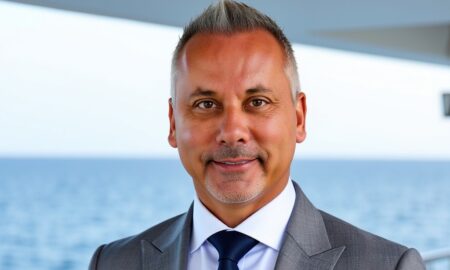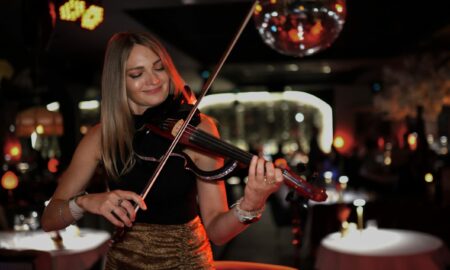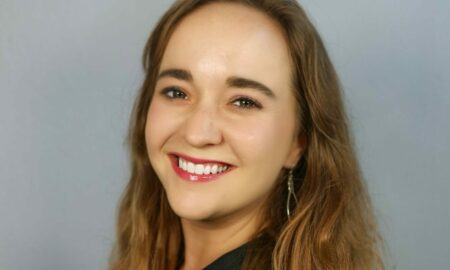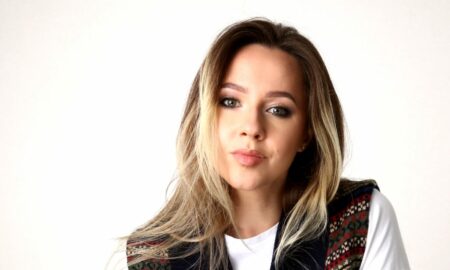

Today we’d like to introduce you to Gil Garcetti.
Gil, let’s start with your story. We’d love to hear how you got started and how the journey has been so far.
I was born in a house near USC. My father was an immigrant from Mexico and had little education. He eventually became a barber and owned a barbershop. My mother was one of 19 children. Her parents also immigrated from Mexico. She worked for many years at a meat processing plant.
Living in South Central Los Angeles, the first occupation I thought I wanted was being a garbage collector. I loved the macho image of the garbage collector picking up the home trash can with one arm and flinging the contents into the truck. And I was struck by what my father told me about these men, “They make very good money.” By our standards, they did.
But in the 6th grade, we had a Career Day where I met a man who said he was a lawyer. I didn’t know what a lawyer was nor had I ever heard of college. By the end of the session with him, this man inspired me to change my career focus. I recall going home that evening and at dinner telling my family, “I don’t know if I am smart enough, but I’m going to try to go to college and become a lawyer.”
14 years later, I was sworn in as a lawyer. My parents were proud of my accomplishments, but probably not as proud as I felt on that day. A few weeks after, I had graduated from USC and before leaving for Europe for graduate studies, I met my wife Sukey, also a Los Angeles native, I met her at an airline office where she worked, Pan Am. I was working there for the summer in order to pay for the plane trip to Europe.
At first, we worked together, but for almost two months we did not see each other after business hours. One day, I lost a bet with her, and we went out to dinner together. Here was this strikingly attractive, very smart, witty, and wonderful woman, but I really didn’t want to get anything started with her because I was leaving for Europe at the end of summer. I had my dreams! But six weeks after our first date, we got married! Many decades later we remain very happily married!!
When I graduated from UCLA Law School, I knew what I wanted to do. I wanted to be a criminal defense lawyer and protect the innocent. But I wound up joining the Los Angeles County District Attorney’s Office because I discovered that the seat of the criminal justice system is really with the DA’s office. I could better protect the innocent from that position than by being a criminal defense lawyer. It was a great and fateful decision. A decision that I could never have foreseen the consequences.
I loved the work, and I loved both the responsibility and the authority to seek justice, true justice. I wound up being in the DA’s office much longer than the three-four years I had penciled into my brain. I was a trial prosecutor, the head of a division that handled the investigation and prosecution of public officials, then the office’s Chief Deputy District Attorney, and ultimately the elected District Attorney.
I thought being the Chief Deputy District Attorney would be the highest position I would ever serve in the DA’s office. I had no plans or desire to run for the office of District Attorney. But one day, after four + years as the Chief Deputy, the then District Attorney informed me that he was removing me from that position. This was front page news, and it was personally and professionally embarrassing. I had the choice of remaining in the office in a lower position or quitting.
I decided to stay because I was confident that in two years that DA would become the state Attorney General and perhaps I could be appointed by the Board of Supervisors for the two years left in his four-year term. Shockingly, he was not successful in his race for AG. Now I was being encouraged to run against him. I had once been active in Democratic politics after law school, but the 1968 election soured me on the process.
If I ran against him it would like starting a new business from scratch and competing against a well know and entrenched adversary. How could I raise at least $1 million to have any chance of success? Who would support me? Did I have the strength and determination to really undertake such a long shot? Eventually, I answered with a resounding yes. I was successful and became the District Attorney.
Being the DA enable me to shift the focus of the office in many ways: to hire lawyers who understood that the role of DA is not just to convict, punish, and imprison, but to initiate programs and policy that help prevent crimes, and more effectively prosecute crimes of domestic violence and child abuse. As the DA, I had the final say in who the office would hire in our 1100 prosecutorial office.
I clearly focused on hiring many more women and minorities and openly solicited bar members of the gay and lesbian community to join our office. We literally changed the face of the office from a white male face to a face that more closely mirrored the communities we served.
As the District Attorney, my responsibility was the entire office of nearly 3000 employees and the tens of thousands of cases we handled every year. I was not the prosecutor in the courtroom, but whatever case was being heard in any courtroom in the county had my name on it, and it was my responsibility. We had a crazy number of very high profile cases, including the first Michael Jackson case, OJ Simpson, Menendez brothers, LAPD Ramparts, and the murder of Ennis Cosby,
With the acquittal of OJ Simpson, the white community was especially upset that we had not successfully prosecuted him and I received the blame. I was able to hold on in my re-election, but four years later the voters turned me out of office. Now, what was I going to do after 32 years in the DA’s office?
In October 2002, I was teaching a class at Harvard entitled “The interaction of the Criminal Justice System, Race, Politics, and the Media.” In that same month, the Los Angeles Times published an article about a photo book of mine that was about to be released. I believed this would be a once in a lifetime experience. The Times article was very positive about my work as a photographer. Other national newspapers also wrote articles.
Shortly thereafter, I received a phone call at my office that probably changed my life. The caller was a Professor of Art at Harvard who had read a couple of articles about my photography, bought the book, and now invited me to teach her art class! Teaching an art class at Harvard was not within my level of comfort, but I did it, and I received not one question about OJ or the Menendez brothers cases, it was all about my artwork.
When I left the DA’s office, I knew I was not going to continue practicing law. When I was 39, I met a man who inspired me to live in good physical and mental health until I was at least 88. When I left the DA’s office, I was 59 and saw that I still had another good 30 years. So why not try something new. Photography was the answer.
Since 2002, I have had published nine photographic books and have had exhibitions around the world including the United Nations and UNESCO. It was through my photography that I was appointed a UNESCO -IHE ambassador. I spoke and photographed on the issue of safe water in developing countries. (One of my early books was on this subject focusing on the countries of West Africa.)
What surprises some of my audiences when I speak about my career change is how I believe that being a lawyer, a trained courtroom advocate, elected official and CEO has helped me become the photographer I am today. Through my books and speeches, I try and tell untold or unknown stories. When I take what I think is a particularly good photograph my first thought is always, is there a larger story here than what this one photograph conveys? That is the training I have as a lawyer and former CEO that directs my photographic efforts.
One last quick story that begins with the “warning”: YOU NEVER KNOW WHO IS WATCHING YOU. Shortly after, I left office, I received a call from a television writer who said that though we had never met, he had watched me ever since I was elected District Attorney. He wanted me to assist him with a TV show he had conceived that would be based on the DA in Los Angeles. “The show would not be about you, but we want someone who is a little like you.
Someone who always wants to do the right thing in the criminal justice system, but who also wants to be the next Governor of California.” The last part was certainly not me. He told me my job would be to bring a legal or ethical issue to every episode AND to make sure that everything in the show is how it is done in fact. I had never been involved in the entertainment industry nor was I interested in it. But we met, and I was impressed with his integrity.
The result? Two very successful prime time dramas that were on the air for 13 years. The lesson? You never know who is watching you and be prepared to take a calculated risk with your career.
Today, my photographic pursuits continue. A major museum just purchased 25 of my photographs, and two weeks ago, CBS agreed to fund a pilot for a new TV series. Best of all, in June I will become the chair of the California Science Center Foundation Board – just blocks from the house in which I was born. Still so much to do!
Great, so let’s dig a little deeper into the story – can you tell us a bit more about the challenges you’ve had to overcome?
I have covered some of this in my previous answer, but there was one big struggle I did not mention. I was one of those people you surely know. Someone who exercises daily eats carefully, never smokes or uses drugs, drinks in real moderation, and has a positive attitude about life. So it was shocking to me to be told when I was 39 that I had a serious case of cancer and that my chances of survival, “… were “good,” 55-60% (That was ‘GOOD?)”
Who knows the cause of cancer, but the lesson is that challenges come to every living human being. Some challenges are particularly rough. Chemotherapy, radiation, and surgery are not fun. You not only look horrible, but you don’t feel too good either as you go through your treatment.
But I kept a promise that I made to my family, that the treatment was not going to kill me and that I would survive. I would never have been the District Attorney, photographer, UNESCO Ambassador, TV producer, and Science Center advocate had I been wrong. You have to believe in what you say and feel.
Gil, even though we were familiar with some parts of your story, hearing it from you directly has us hanging on to the edge of our seats. We’d love to learn a bit more about your photography work. What else can you share with us?
My photography focuses on editorial themes. My most consequential effort has been with my book, WATER IS KEY.
This was a four-year project that focuses on bringing awareness to Americans about the issue of safe water in West Africa. As a result of unsafe water, people die, especially infants, many illnesses and blindness come with bad water, girls and women must travel distances everyday to fetch their water and therefore girls don’t usually go to school and women don’t have time to be involved in micro businesses that could help their families and villages.
The idea for the book came to me shortly after 9-11. I had been in West Africa with the Hilton Foundation earlier in the year. Hilton funds water projects through NGOs working in West Africa. It was on that trip that I learned about the plight of villagers and bad water, but especially the consequences of the daily fetching of water have for women and girls.
I approached the Hilton Foundation and offered to return to West Africa as many times as needed to tell the story of SAFE WATER. I would make no money on the book or my photographs and would speak to audiences through our country and beyond.
Hilton would give copies of my book to NGOs who would then sell the books and use the money for their efforts in West Africa. As a result of the book and my talks, individuals and organizations were inspired to create or assist the efforts of NGOs in bringing safe water to rural villages in West Africa.
Most importantly, bore hold wells that were dug with contributions of Americans permits girls to go to school and many women to become successful microcredit entrepreneurs.
Do you look back particularly fondly on any memories from childhood?
The flour tortillas and tamales my mother and her sisters would make for us.
Pricing:
- My latest book, PROTEA: THE MAGIC AND THE MYSTERY, is available for $60 on Amazon.
- Protea Photographs, editioned, depending on size and edition number range in price from $2200 to $11,000
Contact Info:
- Address: 12021 Wilshire Blvd #505, Los Angeles, CA 90025
- Website: www.garcetti.com
- Phone: 213.300.3100
- Email: [email protected]








Getting in touch: VoyageLA is built on recommendations from the community; it’s how we uncover hidden gems, so if you know someone who deserves recognition please let us know here.




















Vicki Levi
March 29, 2019 at 06:04
A great guy who is immensely talented and a fine human being!